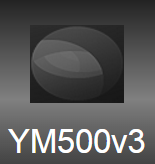Status:
Platform:
Methods:
Species:
MicroRNAs (miRNAs) are small RNAs ~22 nt in length that are involved in the regulation of a variety of physiological and pathological processes. Advances in high-throughput small RNA sequencing (smRNA-seq), one of the next-generation sequencing applications, have reshaped the miRNA research landscape. In this study, we established an integrative database, the YM500 (http://ngs.ym.edu.tw/ym500/), containing analysis pipelines and analysis results for 609 human and mice smRNA-seq results, including public data from the Gene Expression Omnibus (GEO) and some private sources. YM500 collects analysis results for miRNA quantification, for isomiR identification (incl. RNA editing), for arm switching discovery, and, more importantly, for novel miRNA predictions. Wetlab validation on >100 miRNAs confirmed high correlation between miRNA profiling and RT-qPCR results (R = 0.84). This database allows researchers to search these four different types of analysis results via our interactive web interface. YM500 allows researchers to define the criteria of isomiRs, and also integrates the information of dbSNP to help researchers distinguish isomiRs from SNPs. A user-friendly interface is provided to integrate miRNA-related information and existing evidence from hundreds of sequencing datasets. The identified novel miRNAs and isomiRs hold the potential for both basic research and biotech applications.[1]
We previously presented YM500, which is an integrated database for miRNA quantification, isomiR identification, arm switching discovery and novel miRNA prediction from 468 human smRNA-seq datasets. Here in this updated YM500v2 database (http://ngs.ym.edu.tw/ym500/), we focus on the cancer miRNome to make the database more disease-orientated. New miRNA-related algorithms developed after YM500 were included in YM500v2, and, more significantly, more than 8000 cancer-related smRNA-seq datasets (including those of primary tumors, paired normal tissues, PBMC, recurrent tumors, and metastatic tumors) were incorporated into YM500v2. Novel miRNAs (miRNAs not included in the miRBase R21) were not only predicted by three independent algorithms but also cleaned by a new in silico filtration strategy and validated by wetlab data such as Cross-Linked ImmunoPrecipitation sequencing (CLIP-seq) to reduce the false-positive rate. A new function 'Meta-analysis' is additionally provided for allowing users to identify real-time differentially expressed miRNAs and arm-switching events according to customer-defined sample groups and dozens of clinical criteria tidying up by proficient clinicians. Cancer miRNAs identified hold the potential for both basic research and biotech applications.[2]
We previously presented the YM500 database, which contains >8000 small RNA sequencing (smRNA-seq) data sets and integrated analysis results for various cancer miRNome studies. In the updated YM500v3 database (http://ngs.ym.edu.tw/ym500/) presented herein, we not only focus on miRNAs but also on other functional small non-coding RNAs (sncRNAs), such as PIWI-interacting RNAs (piRNAs), tRNA-derived fragments (tRFs), small nuclear RNAs (snRNAs) and small nucleolar RNAs (snoRNAs). There is growing knowledge of the role of sncRNAs in gene regulation and tumorigenesis. We have also incorporated >10 000 cancer-related RNA-seq and >3000 more smRNA-seq data sets into the YM500v3 database. Furthermore, there are two main new sections, 'Survival' and 'Cancer', in this updated version. The 'Survival' section provides the survival analysis results in all cancer types or in a user-defined group of samples for a specific sncRNA. The 'Cancer' section provides the results of differential expression analyses, miRNA-gene interactions and cancer miRNA-related pathways. In the 'Expression' section, sncRNA expression profiles across cancer and sample types are newly provided. Cancer-related sncRNAs hold potential for both biotech applications and basic research.[3]
References
- YM500: a small RNA sequencing (smRNA-seq) database for microRNA research.,
, Nucleic Acids Res, 2013 Jan, Volume 41, Issue Database issue, p.D285-94, (2013)
- YM500v2: a small RNA sequencing (smRNA-seq) database for human cancer miRNome research.,
, Nucleic Acids Res, 2015 Jan, Volume 43, Issue Database issue, p.D862-7, (2015)
- YM500v3: a database for small RNA sequencing in human cancer research.,
, Nucleic Acids Res, 2017 Jan 04, Volume 45, Issue D1, p.D925-D931, (2017)







